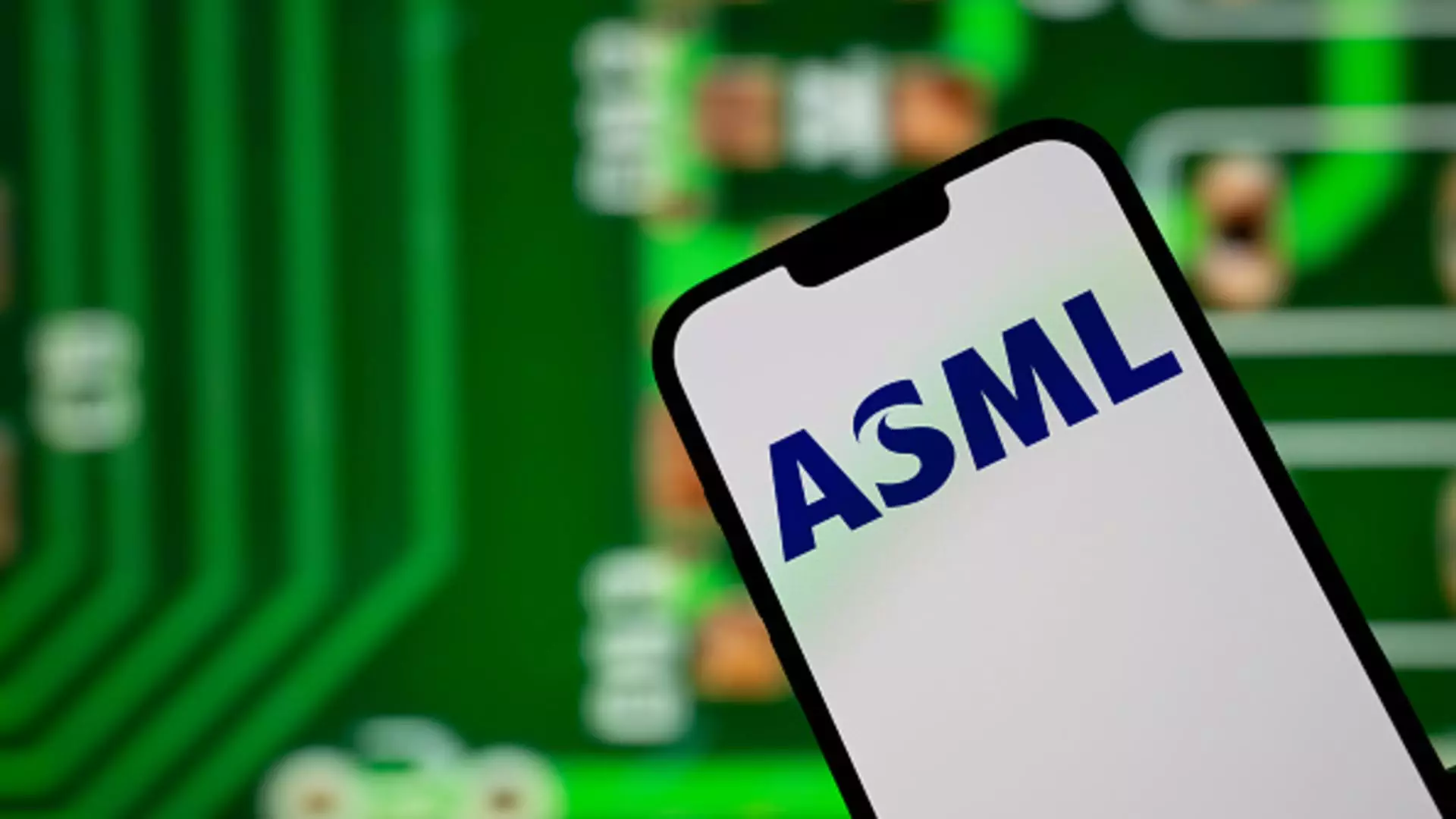The semiconductor industry is notorious for its volatility, and ASML, a leading player in semiconductor equipment manufacturing, has recently stumbled in what could be an unsettling reflection of the broader market landscape. This past Wednesday, ASML reported its quarterly earnings, revealing a net sales figure of €7.74 billion—falling short of analyst expectations of €7.8 billion. Simultaneously, the company’s net profit of €2.36 billion was marginally above analyst predictions but wasn’t enough to instill confidence in investors, as evidenced by a swift 5% drop in share prices following the announcement.
Critically, ASML’s performance exemplifies a brewing storm of complications stemming from external pressures. While net bookings, which are a linchpin in assessing future demand, reached €3.94 billion, they too lagged behind forecasts of €4.89 billion, indicating a hesitation in customer commitment possibly linked to market uncertainties. This kind of disappointment should unsettle anyone observing the semiconductor market, particularly in light of how essential ASML’s machinery is to the rapidly evolving tech landscape.
AI as an Uncertain Beacon of Hope
Chief Executive Christophe Fouquet remained cautiously optimistic during the earnings call, asserting that demand primarily guided by the expanding field of artificial intelligence continues to show strength. However, the assurance feels somewhat superficial when layered against the backdrop of uncertainties resonating from U.S. trade policies. Fouquet acknowledged that the unpredictable nature of tariffs has added an extra layer of angst into ASML’s operational outlook, compelling him to adjust revenue guidance closer to the lower end of their original prediction of €30 billion to €35 billion for 2025.
As a proponent of innovative technology, it’s ironic that ASML, a cornerstone in global chip production, finds itself grappling with external constraints. It raises critical questions: Is the geopolitical landscape ultimately hindering technological advancements? The duality of AI’s promise contrasted by rampant trade barriers poses a conundrum. Yes, AI is set to shape our future, but the machinery that fuels this innovation is marred by uncertainty and inconsistency.
The Trade Tariff Tango: A Global Perspective
Be it tariffs or trade restrictions, the ripple effects are felt throughout the industry, affecting not just direct stakeholders but also consumers and enterprises. ASML’s current predicament underscores a larger narrative, swirling around the ramifications of U.S. tariffs on semiconductor technology. Analysts like Ben Barringer have suggested that the reach of these tariffs poses a potentially widespread impact on customers globally. What once seemed like isolated events are now intertwined within a complex web of international relations and economic interests, placing pressure on ASML’s ability to maintain its position at the forefront of chip machinery.
The dichotomy of market interest versus state-imposed restrictions forces ASML—much like its major client TSMC—to navigate these treacherous waters without choosing sides. In a globalized market, where tech firms leap across borders with expansive supply chains, the rigidities imposed by national policies can trigger both a degree of discontent and genuine concern about the sustainability of growth.
Navigating the Future: Resilience or Retreat?
Looking ahead, ASML sits at a critical juncture. The company is optimistic about its revenue range, holding firm to its projections even as clouds gather on the economic horizon. It is disheartening, yet crucial, to recognize that corporate projections are inherently fragile, susceptible to the volatility of geopolitical upheaval. With companies like Nvidia already announcing significant financial losses due to export restrictions, ASML’s resilience will be put to the test.
Balancing ambition and caution is a tightrope walk, particularly in an environment where policies seem to shift like sand. It is only logical to question the long-term implications of these dynamics on innovation. The excitement surrounding artificial intelligence may be dampened by the constraints of regulatory environments and the potential chokehold of tariffs. Essentially, ASML’s struggle reflects a microcosm of larger global issues that could stifle progress if not addressed thoughtfully.
In this tumultuous era of rapid technological advancement overshadowed by bureaucratic red tape, ASML may find itself not only in the business of forging partnerships and innovating chip machinery but also in the urgent task of navigating the tumult of trade tensions. Such endeavors will demand more than strategic prowess; they will require resilience and the ability to adapt in a world increasingly defined by economic unpredictability.

